by Deep Green Resistance News Service | Jul 26, 2013 | Human Supremacy, Male Supremacy, White Supremacy
By Kourtney Mitchell / Deep Green Resistance
Over the almost seven years I have been involved in social justice activism of various kinds, my level of understanding concerning our social and planetary predicament has grown quite a bit. I began my process towards a radical perspective as a student activist in the university anti-violence against women movement. It was there I developed what I like to call a clear “scope of the problem.
Allow me to back up a bit. I did not know it at the time, but while I was in high school my family survived a rough experience fighting the local police department that helped prime me for radical activism. My mother, while an officer, filed a civil suit against the department for racial discrimination. The ordeal was traumatizing – the media was relentless in their assaults on her character, the department engaged in continuous harassment of my family (including forcibly evicting us from our home on my 16th birthday), all of this culminating in several relocations in- and out-of-state. If it were not for the consistent support of family, friends, legal counsel and a compassionate and talented journalist who had our back, the city and its armed thugs would have certainly continued its oppression against us. Instead, my mother’s case was a primary reason the city organized a citizen’s review board to oversee law enforcement activities. My mother and I went on to write and publish a creative nonfiction book of her experience.
To this day, I am consistently amazed at my mother’s strength and courage. I witnessed her defy all odds, determined to stand up to the city’s bullying and set a lasting precedent for future generations.
As a teen I was not inclined towards activism, but that all changed when I attended college and somehow found myself sitting in the social justice center talking pro-feminist theory with fellow campus community members. I completed feminist and anti-violence training and that is when the real change began.
The information I learned was harrowing. I had no idea just how prevalent male violence against women was. Shaken to the core, I spent several nights in tears, struggling to understand just how the world became this way and how it could possibly continue. From the first night of training, I knew pro-feminism would be my life’s work. It became my passion.
Further social justice training on issues of race and class began to complete the circle for me. My own life experiences started to make much more sense, and I became sensitive to issues of justice and equality.
Then it was time for another wake-up call. I do not remember exactly how I discovered radical politics, but eventually I came upon Marxist theory, which then lead me to anarchism and eventually anti-civilization. I began reading Derrick Jensen’s Endgame in the fall of 2008, and all of the emotions I felt when completing activist training came rushing back to the fore.
It was all even worse than I had thought – the levels of violence against women, people of color, indigenous communities, children and now the planet. We are, in the words of Lierre Keith, “turning the planet to dust” with agricultural and extractive industrial processes. Quite literally, the planet is being killed, and that murder is increasing over time.
And that is when it all finally clicked, once and for all. It took me nearly three years to finally complete Endgame. Jensen does not hold back – his writing makes the violence of this culture so palpable. In addition to pro-feminism, I decided to somehow find a way to assist in the fight against industrial civilization, just in time for the publication of Deep Green Resistance: Strategy to Save the Planet.
A good definition of “scope” is “extent or range of view.” It is how far or wide one is able to see, how much of a given subject, problem or circumstance one has considered. A narrow scope yields superficial or inadequate results in addressing a given situation. A wide scope allows one to consider more possibilities, and be more honest about what needs to be done.
My life experiences have given me no choice but to keep a wide scope of our planet’s peril. I have been fortunate – and unfortunate – enough to have, directly or indirectly, experienced many of this culture’s truly wicked crimes against humanity.
An aspect of widening your scope that is important to consider is that when you do, it is likely you will never be the same. Society will transform before your eyes – what was once a world seemingly full of pleasure and privilege becomes one in which oppression, repression and psychopathic behavior are the norm, the way the system works.
But when you do widen your scope, and finally become honest about what is happening, you have a responsibility to act. And you must allow the reality of the situation to inform your actions.
Jensen, Ward Churchill, Peter Gelderloos, Arundhati Roy, Stephanie McMillan, and so many others have all articulated it in various ways – the dominant culture will not voluntarily transition to a more sustainable way of life unless we force them. Even if it were possible, it is unlikely to occur within a timeframe adequate enough to save the planet from destruction.
Consider this: there is a chance that this planet is the only source of life of its kind in the entire universe. Whatever your belief, this is a possibility, and industrial civilization is destroying potentially the only source of life.
One would be hard-pressed to find a greater evil than that. If you ever wanted to determine a set of objective moral truths to follow and carve them onto a couple stone tablets, this is a good start: destroying all life on earth is evil and immoral and it must be prevented by whatever means necessary.
We are facing a global temperature increase between five and eleven degrees Celsius by the end of the century. Keep in mind that just a few degrees increase is more than enough to wipe out the vast majority of diverse species on the planet.
Last year, 313 black men were killed by police or other vigilantes, an average of one every 28 hours.
Men battering women is the most common crime in the world; a man beats a woman once every fifteen seconds. And at least one-third of all women will be sexually assaulted in their lifetime.
We must begin to see the world through the lens of justice, and our scope must extend to all of life. There are some very serious yet important questions that need to be answered, and very soon: What do we value – life or luxury? If the dominant culture is incapable of changing on its own, are we prepared to force it to change? And what will it take to do so?
There is no use in hiding behind our privileges, comforts and perceived inadequacies any longer. Oppressed communities have been on the front lines fighting back against genocide of mind and body since the onset of this culture, but now everyone and everything is at risk. Even the privileged elite – sadistic in their callous disregard for the welfare of others, stopping at nothing to extract every ounce of resources from whoever they can – will have to pay for their actions. And that payment will be made in blood.
So what scope are you using? Are you waiting for a mass shift in collective consciousness, ascension into a higher spiritual plane of existence? If so, please tell me: who all is included in this ascension? Will the psychopaths destroying the planet be going as well? Seriously, you can have them. Take them with you. I love this beautiful planet and I’m staying here to fight for it.
Get serious about the situation we are in. Take a step back, look at the world for what it really is, swallow that lump in your throat, and join us. Let the emotions wash over you – allow yourself to fully feel them. Get acquainted with that despair and heartbreak, and then do what is necessary to make sure future generations do not also have to feel it.
Everything we do needs to be done mindful of its effect on several generations ahead. This culture is so short-sighted; in less than one percent of our existence on this planet, we’ve decimated land, animal, water and air. There is a hole in the ozone layer, and acid in the rain, and the very soil upon which we depend is either blowing away in the wind or running off into the seas and oceans.
Such is the result of limiting our scope to the next quarter, or the next fiscal year. It is a suicidal tendency. Let’s rediscover our sanity. Communion with each other, with Earth, and with its entire community of life – this reconnection will help us reverse this murderous trajectory. We don’t have much choice, anyway. So widen your scope and fight.
We have a planet to save.
Let’s Get Free! is a monthly column by Kourtney Mitchell, a writer and activist from Georgia, primarily focusing on anti-oppression and building genuine alliance with oppressed communities. Contact him at kourtney.mitchell@gmail.com.
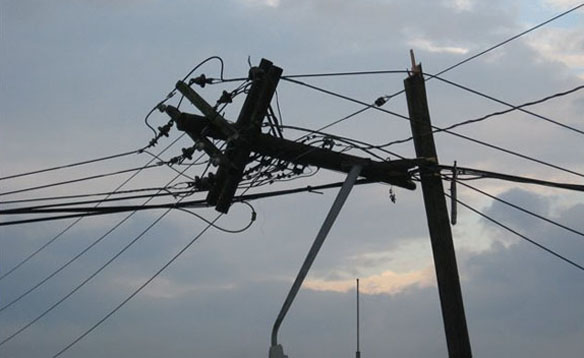
by Deep Green Resistance News Service | Feb 20, 2013 | Lobbying, Movement Building & Support, Obstruction & Occupation, Property & Material Destruction, Strategy & Analysis
Resistance against exploitation is nothing new. History is full of examples of people—perfectly ordinary people—fighting back against injustice, exploitation, and the destruction of their lands and communities. They move through whatever channels for action are open to them, but often, left with no legal or political power, they turn to militant means to defend themselves.
It is hardly a simple decision, and rarely the first or preferred option, but when all other paths have been explored and found to lead nowhere, militant action becomes the only realistic route left. Movements and communities come to that truth in many different ways, but almost without fail, they come to it borne by a collective culture of resistance. One inspiring example is the Bolt Weevils.
The Bolt Weevils were a group of farmers in Minnesota who spent several years in the late 1970s perfecting the fine art of sabotaging interstate electrical transmission lines. Their efforts have been memorialized in numerous books and songs, and their story is a hopeful one we would do well to remember and re-tell.
The story of the Bolt Weevils begins in the mid-1970s, when the Cooperative Power Association (CPA) and United Power Association (UPA) proposed construction of a new interstate high-voltage transmission line. Taking its name from the two cooperatives, the CU Powerline would carry current from a generating station in North Dakota across west-central Minnesota to feed the urban centers of the Twin Cities.
In determining a route for the powerline, small farmers land was rated less important than large industrial farms, and as a result, the proposed route crossed the property of nearly 500 landowners. Outraged at being trodden over to for the benefit of industry and urbanism, resistance against the project began immediately in earnest.
Once residents found out about the project, they refused to sign land easements. Local towns passed resolutions opposing the project and reject construction permits. The powerline went to review before the State’s Environmental Quality Council, which went ahead and granted the necessary permits in the face of overwhelming public opposition.
When surveyors showed up out of the blue in one farmer’s fields, he smashed their equipment with his tractor and rammed their vehicle. The action of that one farmer helped catalyze popular sentiments into action. Farmers began using CB radios to notify one another about surveying activities, and would turn out in groups to stop the work. As resistance began to build, local radio stations would broadcast times and locations of protestor gatherings. Farmers and others who opposed the project began meeting every morning in the Lowry town hall, hosting others who’d come from neighboring counties, to make plans for each day.
As surveying and construction continued, the locals escalated their efforts. They would erect signs in their fields to block the sightlines of the surveyors, and stand next to survey crews running their chainsaws to disrupt their work. Survey stakes disappeared overnight. Farmers used their trucks to make roadblocks and their tractors to pile boulders in the construction sites. One group even gained permission from the county to improve a rural road—they dug a ditch across it to stop all traffic.
They filed more lawsuits, and the issue was eventually taken up by the Minnesota Supreme Court, which in the spirit of everything it represents, decided against the farmers and in favor of the powerline. Many of the citizens opposing the pipeline had earnestly believed in institutions like the Supreme Court and the structures of power. After their battles through the courts, many of them were disillusioned and had been radicalized.
Law enforcement began escorting construction and survey workers, and the situation came to a head on January 4th 1978, when 100 farmers chased powerline crews from three different sites, fought with police, and even tore down part of a tower. The next week, the Minnesota Governor ordered the largest mobilization of the State Troopers in Minnesota’s history, with 200 Troopers—fully half of the force—descended on the rural area to ensure construction continued.
Protests continued and grew, as the issue began to draw national and international media attention; hundreds turned out for rallies at survey sites, and some schools even let out so students and teachers could attend. In St. Paul, thousands of farmers rallied and demonstrated, and in March of 1978 more than 8,000 people marched almost ten miles through freezing temperatures from Lowry to Glenwood to protest the CU powerline.
It was in the heat of August that the kettle boiled over. Bolts on one of the transmission towers were loosened, and soon afterwards, it fell over, as the Bolt Weevils entered the scene. Then three more fell over. Guard poles and bolts were cut and loosened, insulators were shot out. Over the next few years, 14 towers were felled and nearly 10,000 insulators were shot out. Soon, helicopters patrolled the powerline, and it was made a federal offense to take down interstate transmission lines.
There were numerous arrests, some 120 in all, but only two individuals were ever convicted on felony charges, and even then they were only sentenced to community service. Opposition to the powerline was so common that in some instances, witnesses refused to testify against farmers.
In the end, unfortunately, the powerline was built and went into operation, despite the protests and the disruptions by the Bolt Weevils. While they were unsuccessful in ultimately stopping the project, there’s much from their efforts that we can learn and apply to our work today against exploitation and civilization.
As in most social struggles that turn to property destruction and militancy, that wasn’t the first choice of tactics for those on the ground. They fought for years through accepted legal and political avenues, turning to material attacks after all other courses of action had proven ineffective. But more than that, the popular agitation and organizing in the years leading up to the emergence of the Bolt Weevils didn’t merely precede militant direct action: it laid the groundwork for it.
The work of the local farmers—their protests, demonstrations, civil disobedience, and community organizing—paved the way (forgive the phrase) and set the conditions for the sabotage that would later occur. By mobilizing residents and community members against the project, building social networks, and agitating and raising opposition against CU powerline, a collective culture of resistance was created, planting and watering the seeds from which the Bolt Weevils were born.
With civilization churning onwards towards biotic collapse and underground resistance the only real hope left, caring for those seeds is our primary duty today. The story of the Bolt Weevils—like countless other stories of resistance—shows that militant resistance emerges from strong and supportive cultures of resistance. The time to start building such a culture was yesterday. For those of us who choose to organize and work in an aboveground and legal way, building such a culture that embraces and celebrates sabotage and the use of any means necessary to stop the omnicide of industrialism is our foremost task.
The story of the Bolt Weevils isn’t empowering and inspiring because they “fought off the bad guys and won.” They didn’t win. The power lines were built, forced down their throats in the face of their resistance. No, their story is inspiring because it so clearly and undeniably demonstrates how simply feasible sabotage and material attacks truly are. Often, we talk about militant resistance and direct action as mysterious and abstract things, things that wouldn’t ever happen in our lives or communities, things that no one as ordinary as any of us would ever do.
Whether we romanticize underground action or are intimidated by it, we generally talk about it as though it is something out of a movie or a novel. The truth is that such actions are simply tactics—just like petition-drives or street marches—that can be used to dismantle systems of power. The Bolt Weevils—a group of farmers with hunting rifles and hacksaws*—serve as a stark reminder that one doesn’t require military training and high-tech gadgets to act in direct and material ways against the infrastructure of destruction. We’re all capable of fighting back, and while sabotage against industrial infrastructure can be daunting for many valid reasons, technicality isn’t one of them.
We may have to fail working through other channels (as if we haven’t already) before collectively turning to sabotage and attacks on industrial infrastructure as a strategy, and we will certainly need to build a supportive and strong culture of resistance. But if we’re serious about stopping the destruction and exploitation of civilization, we will be left with no other choice.
*This is speculative. I don’t actually know how they shot out insulators or cut through guard poles, although there are plenty of accounts of hunting rifles and hacksaws being used in this fashion, and it’s from those stories that I hazard this guess.
Time is Short: Reports, Reflections & Analysis on Underground Resistance is a biweekly bulletin dedicated to promoting and normalizing underground resistance, as well as dissecting and studying its forms and implementation, including essays and articles about underground resistance, surveys of current and historical resistance movements, militant theory and praxis, strategic analysis, and more. We welcome you to contact us with comments, questions, or other ideas at undergroundpromotion@deepgreenresistance.org
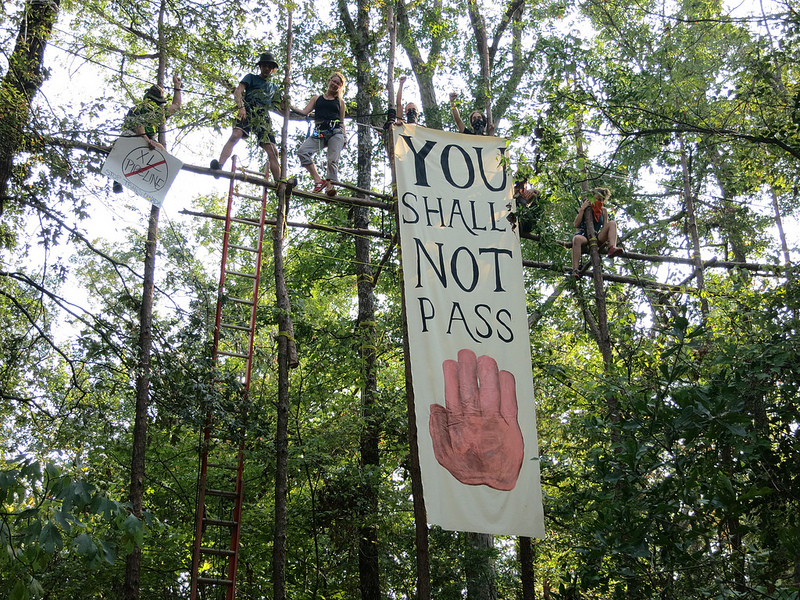
by Deep Green Resistance News Service | Sep 26, 2012 | Obstruction & Occupation
By Tar Sands Blockade
Nine people sitting 80 feet above ground in tree platforms on the path of TransCanada’s Keystone XL construction enter their third day of sustained action to stop the toxic tar sands pipeline. The sitters are undeterred by TransCanada’s role in the torture of their fellow blockaders.
Tuesday, Shannon Bebe and Benjamin Franklin delayed construction for most of the day when they locked arms around construction machinery, intent on protecting East Texas homes. The two were subjected to torture tactics by police only after TransCanada’s senior supervisors huddled with law enforcement to actively encourage the use of extreme pain compliance techniques on the peaceful protesters.
Immediately following TransCanada’s consultation, law enforcement handcuffed the protesters’ free hands to the heavy machinery in stress positions and proceeded to use sustained chokeholds, violent arm-twisting, pepper spray, and repeated tasering to coerce the two to abandon their protest. Extraordinarily, despite their torture, the two endured for over five hours, affirming their courageous stance that taking action now is less of a risk than doing nothing.
Upon the protesters’ arrest, TransCanada supervisors were seen and heard congratulating law enforcement on a job well done.
“TransCanada has frequently claimed its interest in protecting the safety of workers and protestors but now we can see that’s all a lie,” said Ron Seifert a spokesperson with Tar Sands Blockade. “Now that they have actively encouraged the torture of peaceful protestors its clear that this multinational corporation assigns no value to the basic humanity that all Texans and people everywhere deserve.”
With the news that their friends had been tortured with TransCanada’s approval, the eight original tree sitters were bravely joined by another, expanding the tree blockade further as TransCanada’s clear-cutting heavy machinery rapidly approaches. Construction is roughly 300 yards away from the tree blockade. All refuse to come down until TransCanada halts its dangerous pipeline project.
“I climbed this tree three days ago in the path of Keystone XL to demonstrate the dangers of this toxic pipeline and to let TransCanada know that we will continue to non-violently resist their brutal tactics,” said Justin Jacobs, an aerial blockader. “I’m here to defend this land from a multinational corporation who has blatant disregard for the safety of peaceful people, families, and our planet.“
Tar Sands Blockade is a coalition of Texas and Oklahoma landowners and climate justice organizers using peaceful and sustained civil disobedience to stop the construction of the Keystone XL tar sands pipeline.
Concluding hours of hard-fought Keystone XL construction delays, Benjamin Franklin shared, “In light of everything that happened at the direction of TransCanada, I still don’t regret my involvement at all. I encourage everyone to persevere in the face of this type of sheer brutality. To follow one’s moral compass despite extreme challenges is the way we move forward towards a more humane, tar sands-free planet.”
From Tar Sands Blockade: http://tarsandsblockade.org/press/press-releases/
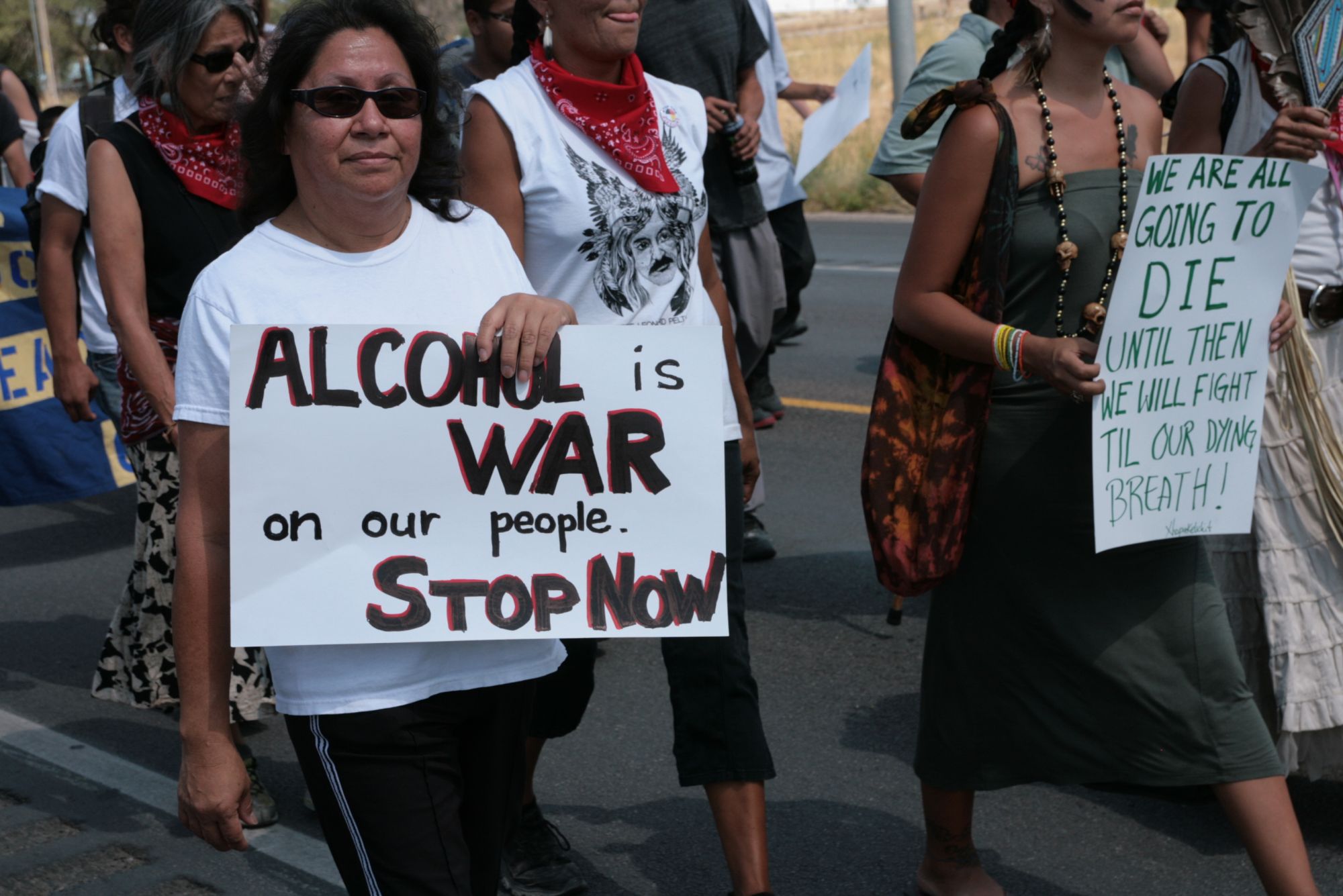
by Deep Green Resistance News Service | Aug 26, 2012 | Colonialism & Conquest, Indigenous Autonomy, Obstruction & Occupation
Whiteclay is an unincorporated village with a population of 14 people in northwest Nebraska. The town sits on the border of the Pine Ridge Indian Reservation, home to the Oglala Lakota (also known as the Oglala Sioux Tribe).
Whiteclay lies on disputed land, merely 200 feet from the official reservation border and less than 3 miles from the center of Pine Ridge, South Dakota, the largest town on the reservation.
Sale and possession of alcoholic beverages on the Pine Ridge is prohibited under tribal law. Except for a brief experiment with on-reservation liquor sales in the early 1970s, this prohibition has been in effect since the reservation lands were created.
Whiteclay has four off-sale beer stores licensed by the State of Nebraska which sell the equivalent of 4.5 million 12-ounce cans of beer annually (12,500 cans per day), mostly to the Oglalas living on Pine Ridge. These retailers routinely violate Nebraska liquor law by selling beer to minors and intoxicated persons, knowingly selling to bootleggers who resell the beer on the reservation, permitting on-premise consumption of beer in violation of restrictions placed on off-sale-only licenses, and exchanging beer for sexual favors. The vast majority of those who purchase beer in Whiteclay have in fact no legal place to consume it, since possession and consumption of alcoholic beverages on the Pine Ridge Reservation remain illegal under tribal law. Many people have died in the streets due to exposure, as the state of Nebraska fails to uphold state law or police Whiteclay. As long as the liquor stores in Whiteclay remains in business, the genocide of the Oglala Lakota people will continue.
Tribal activists of the Strong Heart Warrior Society have conducted annual blockades since 1999, trying to intercept alcohol and drugs being brought into the reservation. In June 2006 tribal activists protested beer sales by blockading the road from Pine Ridge to Whiteclay and confiscating beer bought in Whiteclay. These activists hoped to prevent bootlegging and illegal sales on the reservation. On June 9th of this year, young Lakota activists and their non-native allies held a blockade of the highway leading into Whiteclay, and gained concessions from law enforcement.
In solidarity with the Oglala Lakota people, members of Deep Green Resistance are assisting an action now to shut down the bars in Whiteclay forever.
Updates on action:
Sun. August 26, 2012 (All times MDT)
As of 10:00 PM: Police and firefighters unable to unlock the blockaders once at the jail. The five released without bail after agreeing to unlock themselves.
7:59 PM: Tribal police have come into Nebraska to block support to the folks on lockdown. Nebraska State Patrol has brought in a trailer and carried the lockdown, as a unit, onto the trailer (one person may have sustained injuries due to this police maneuver). They are now being transported to the jail. They are still locked together. Stay tuned for updates on the protestors’ status and information on how to help!
6:22 PM: Police are bringing in a livestock trailer to attempt to move the blockade as a unit to a different location. They have threatened the blockaders with felony charges. Blockaders have decided to hold their ground. This is what resistance looks like.
5:30 PM: Police have threatened to arrest another protester.
4:20 PM: There’s a line of cops, a line of warriors, and a line of blockaders. There’s a huge banner that says “Honor the Treaties”. Lakota people are chanting and drumming.
4:00 PM: All four bars in Whiteclay have been shut down. Two arrests have been made. Police have issued an ultimatum that all those locked down in Whiteclay must walk back to the reservation or they will be arrested.
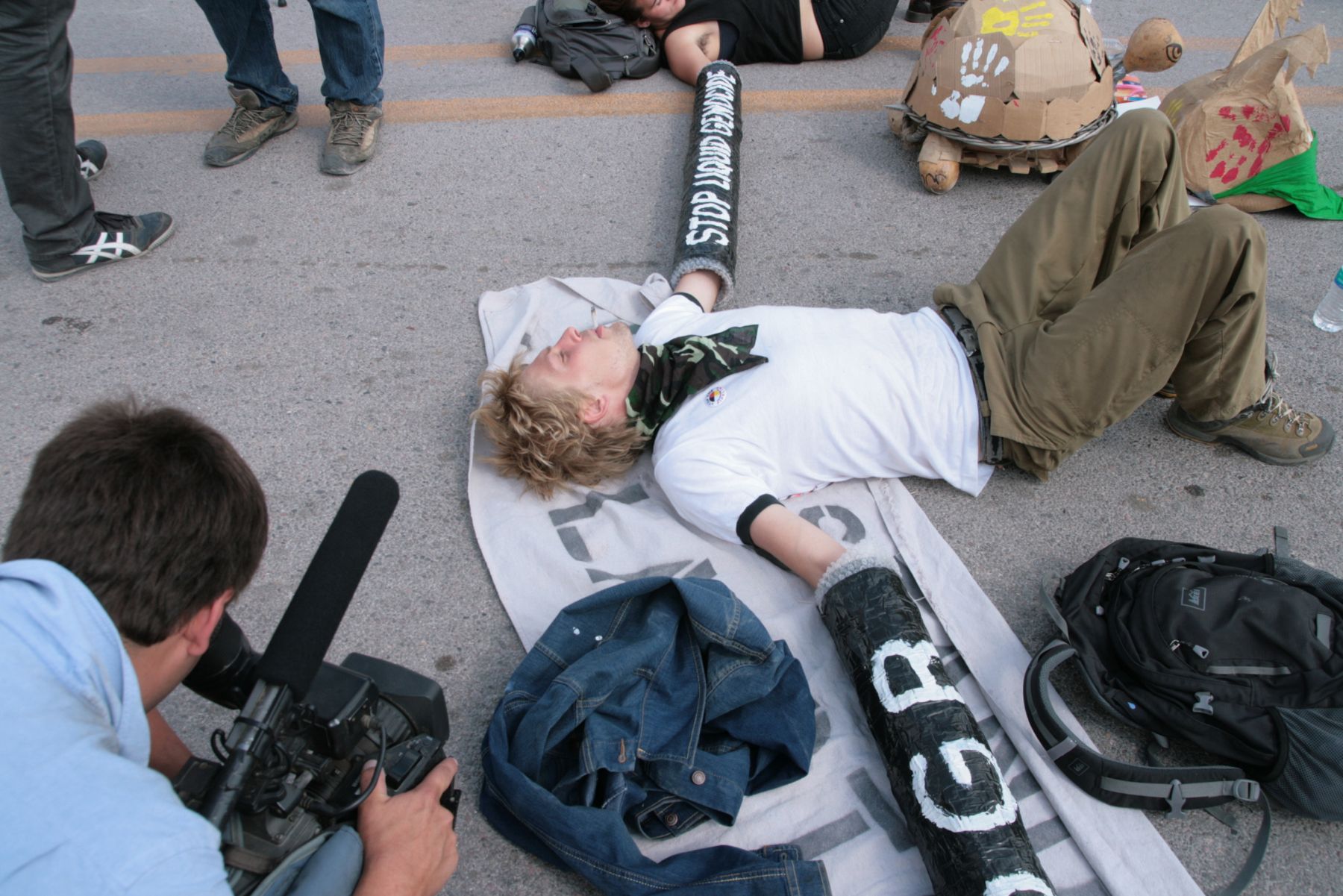
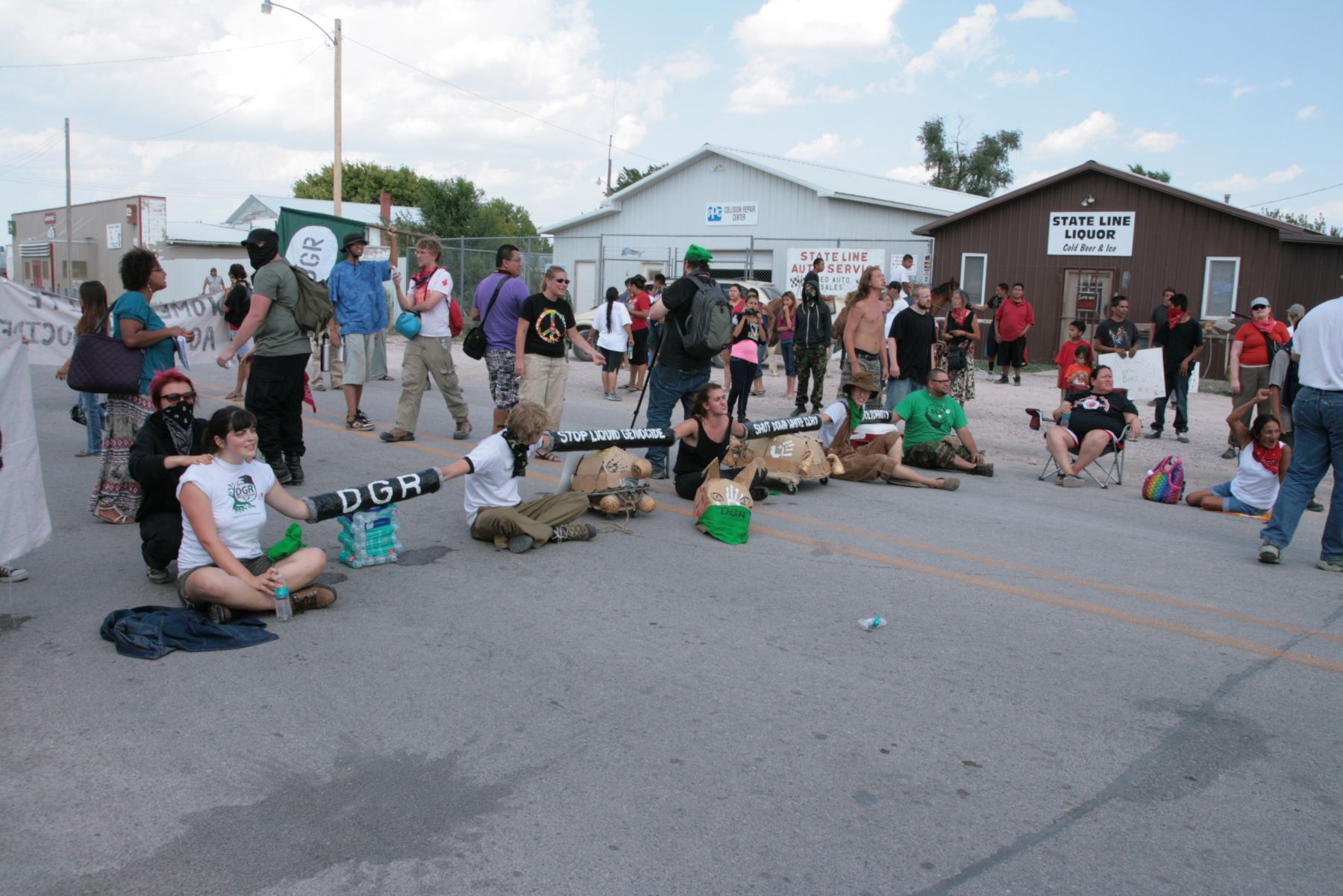

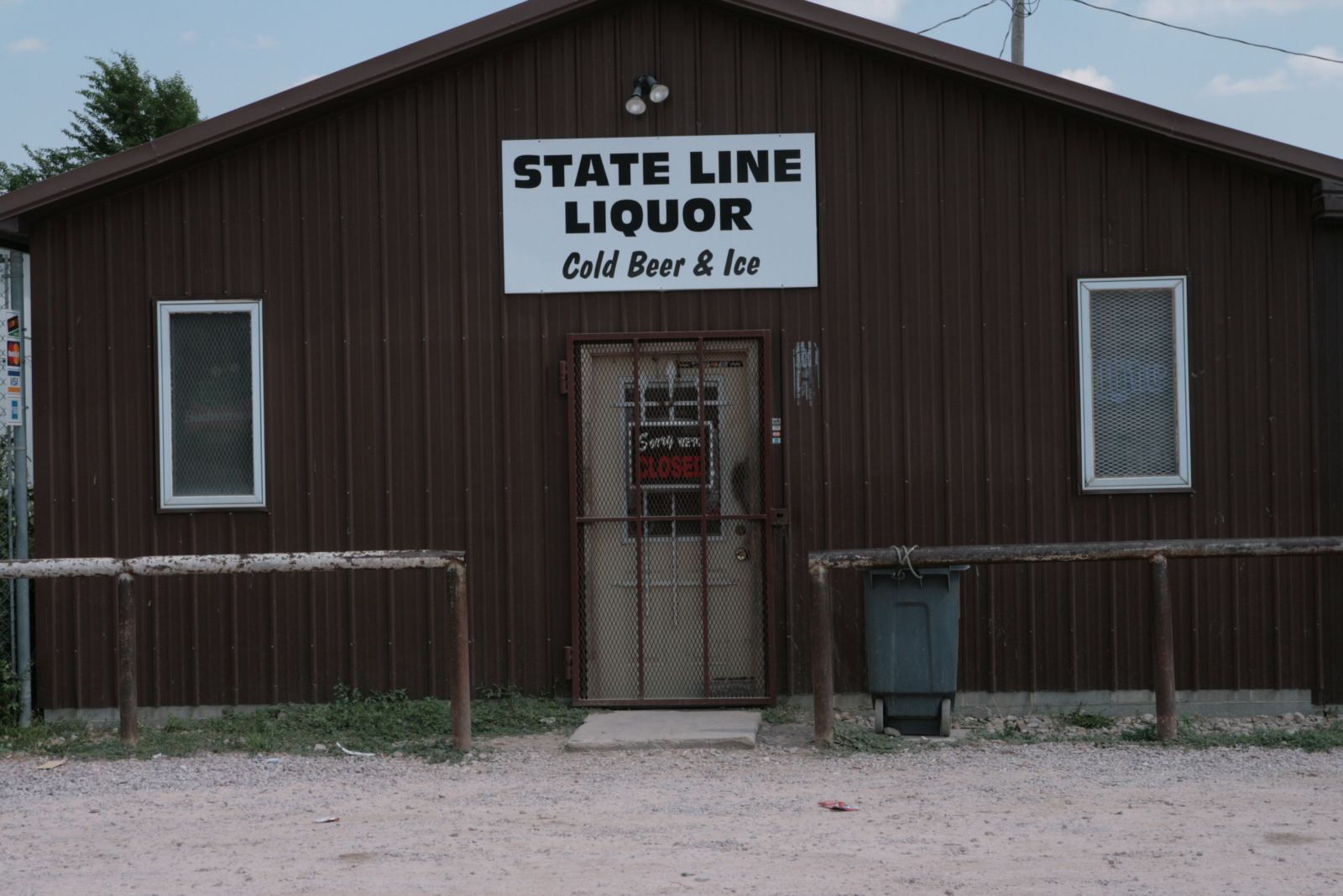
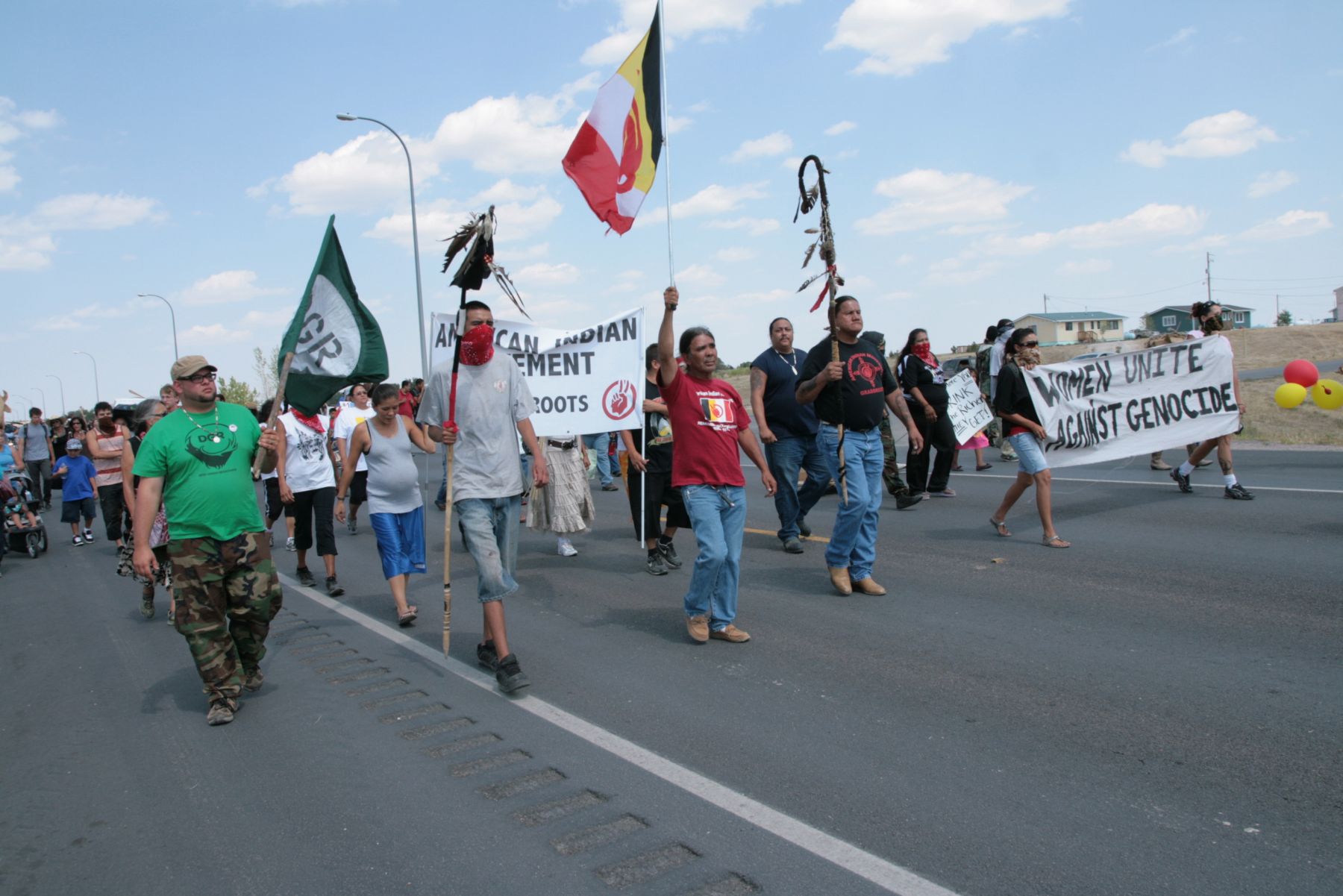
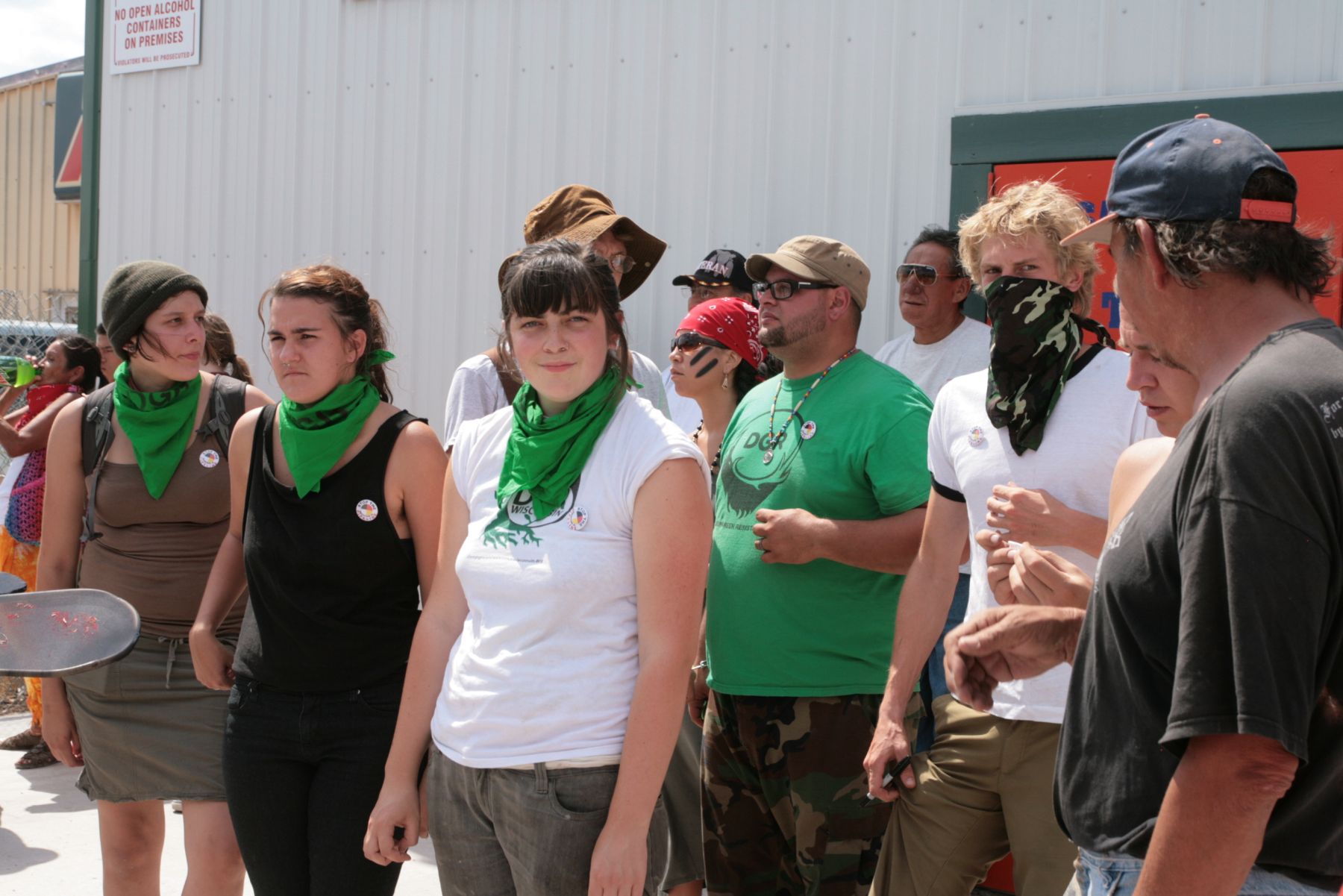
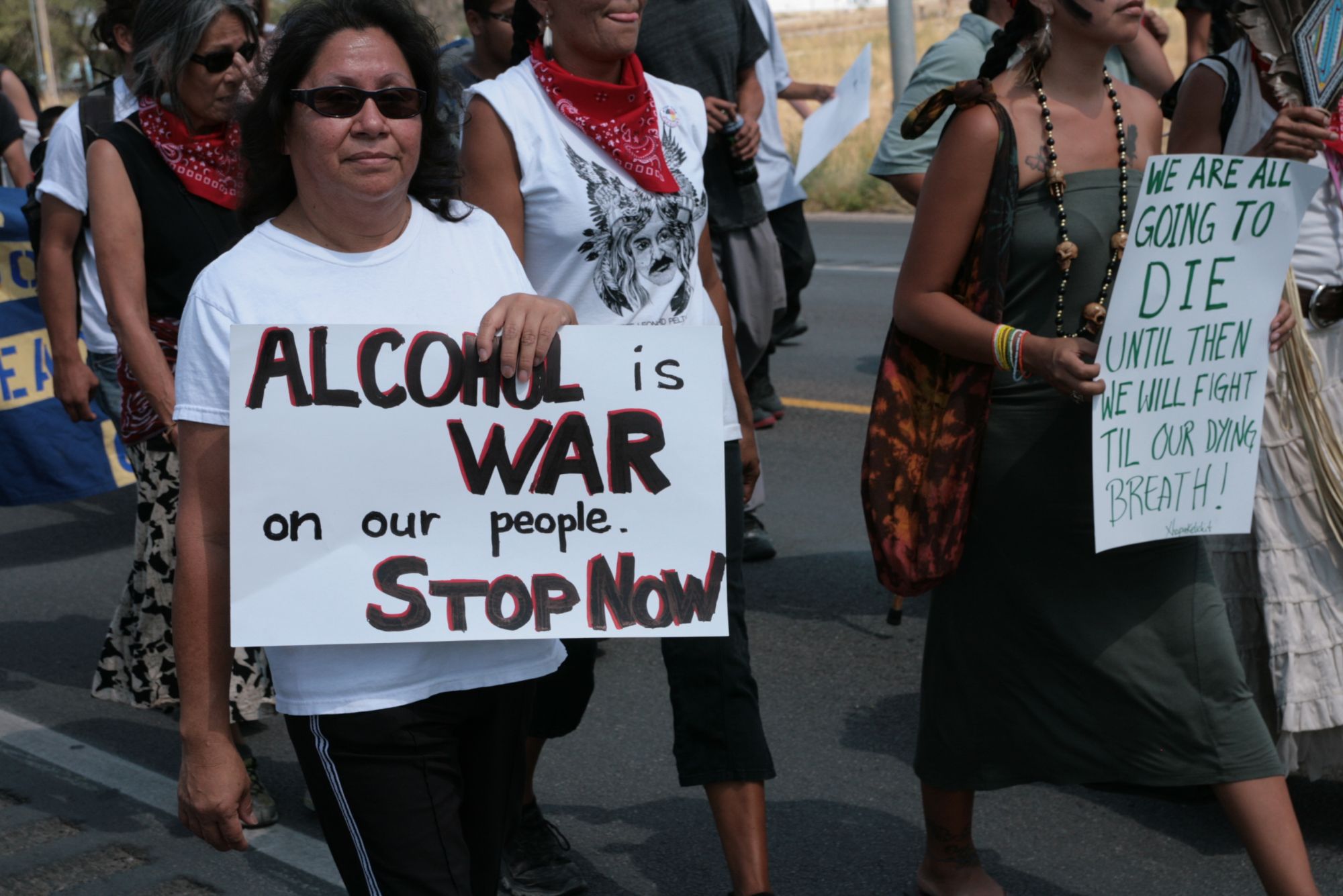
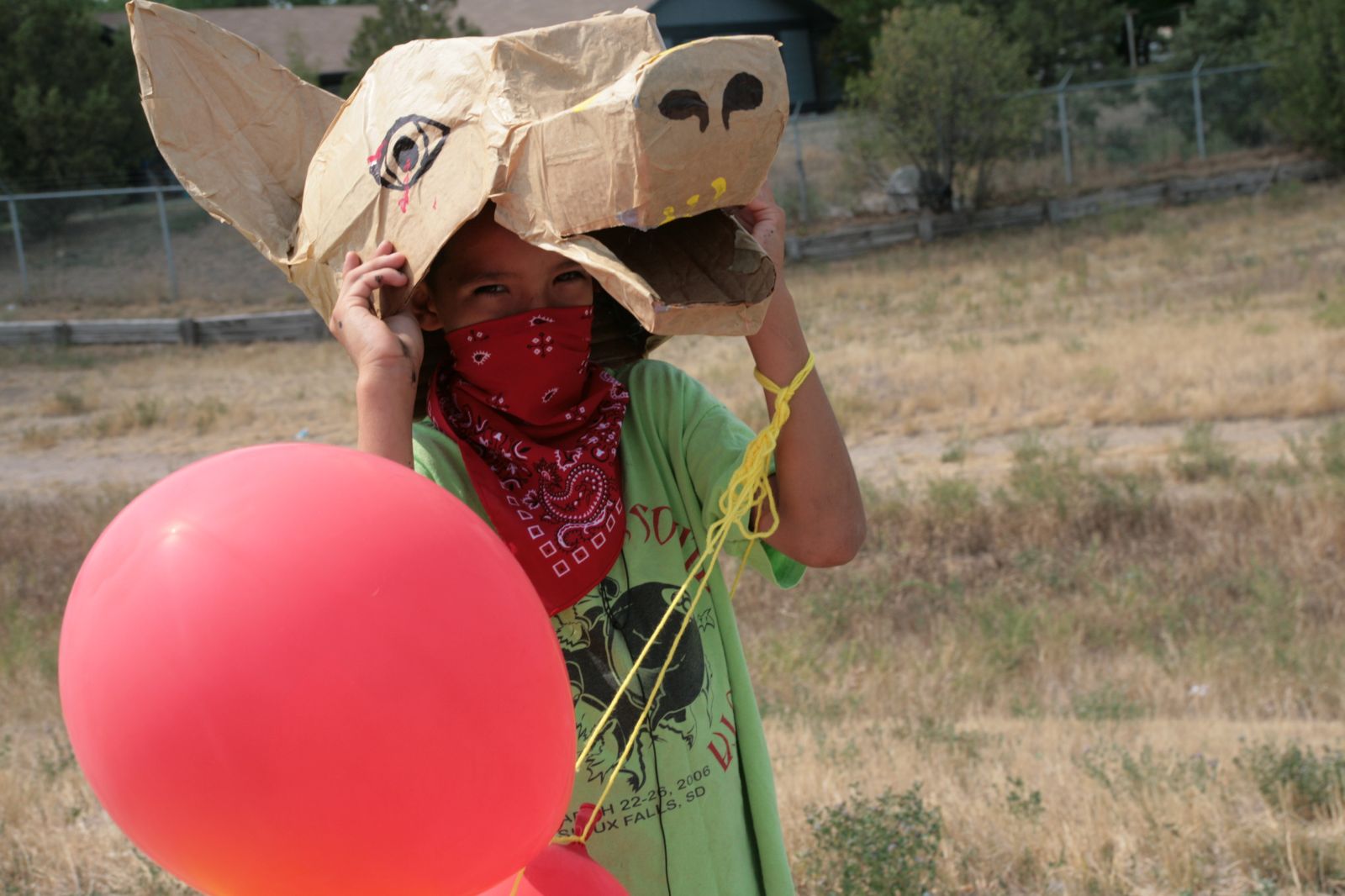
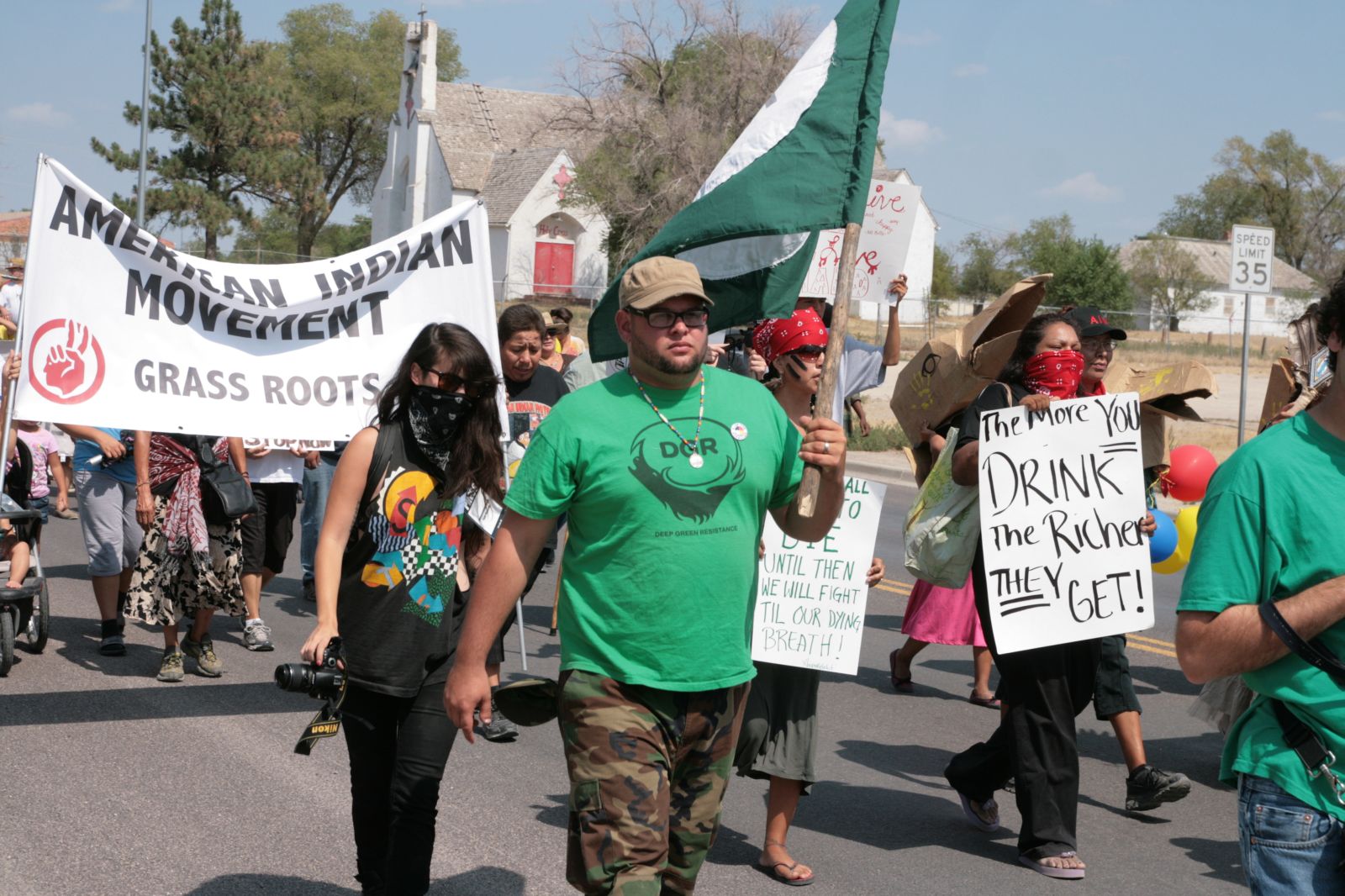
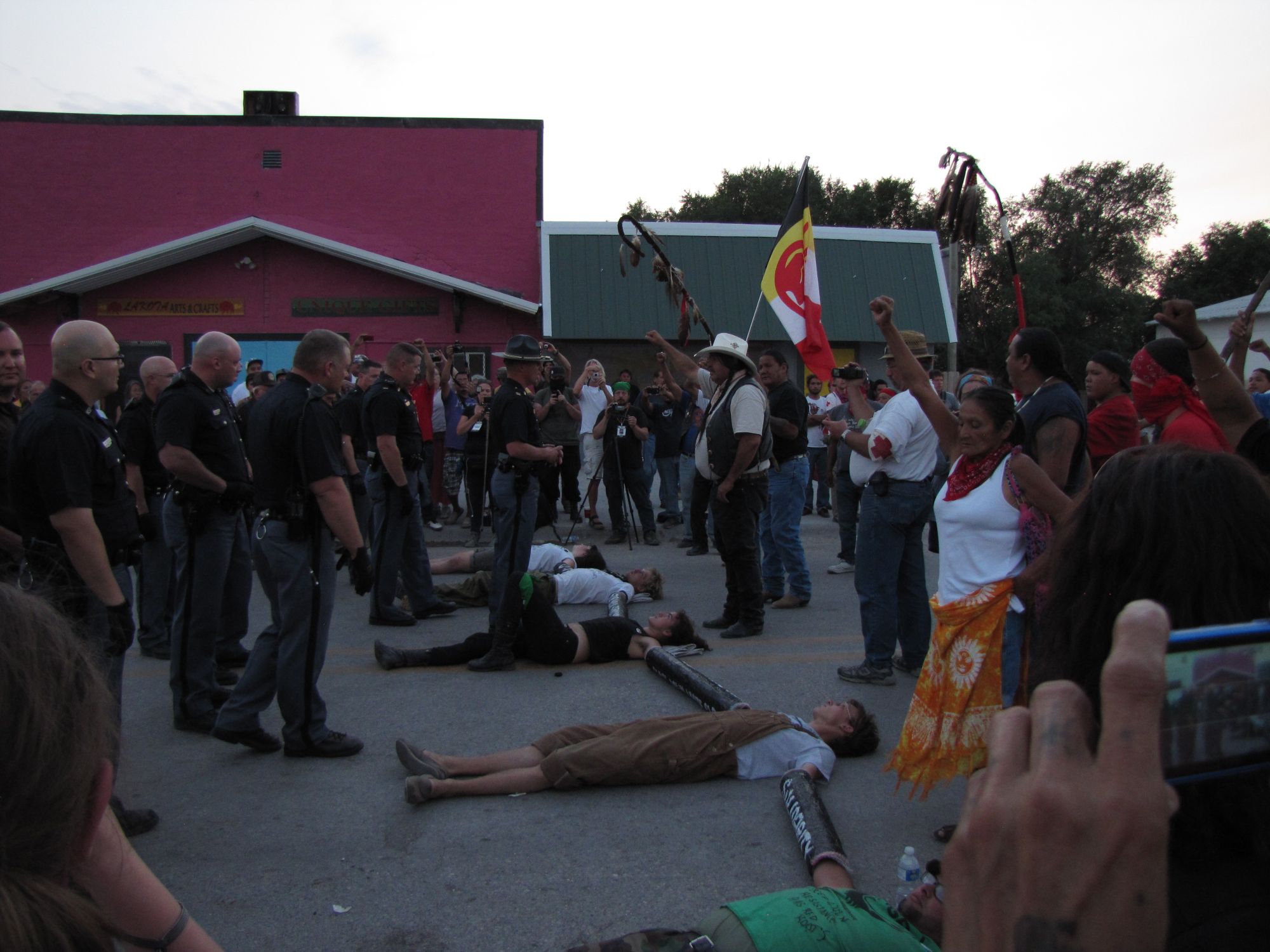

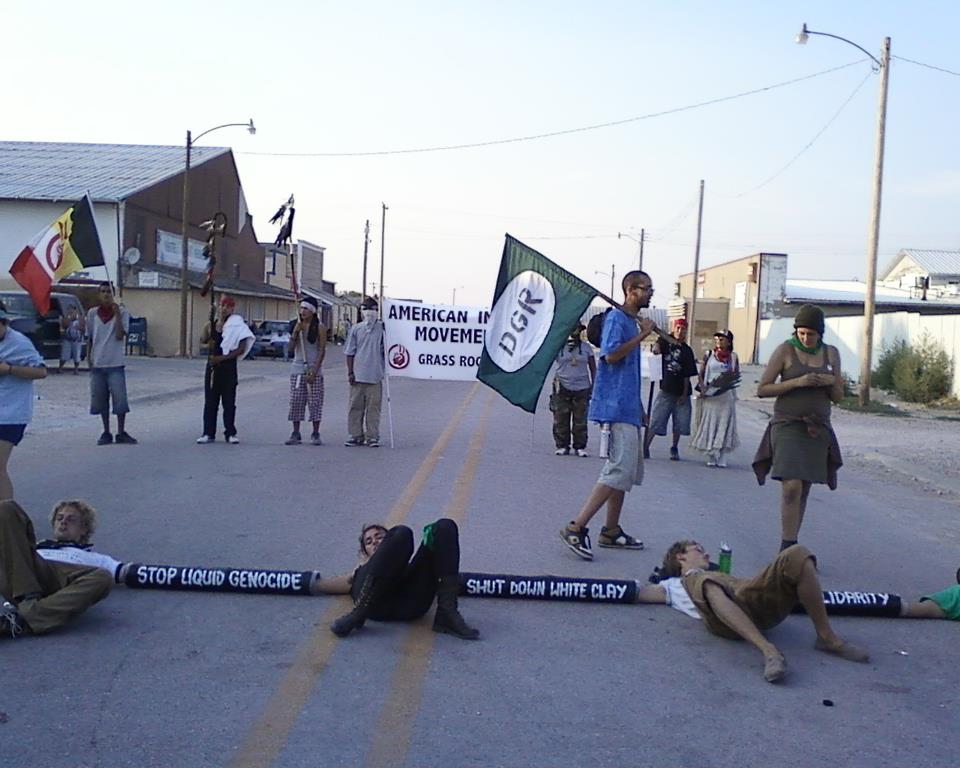
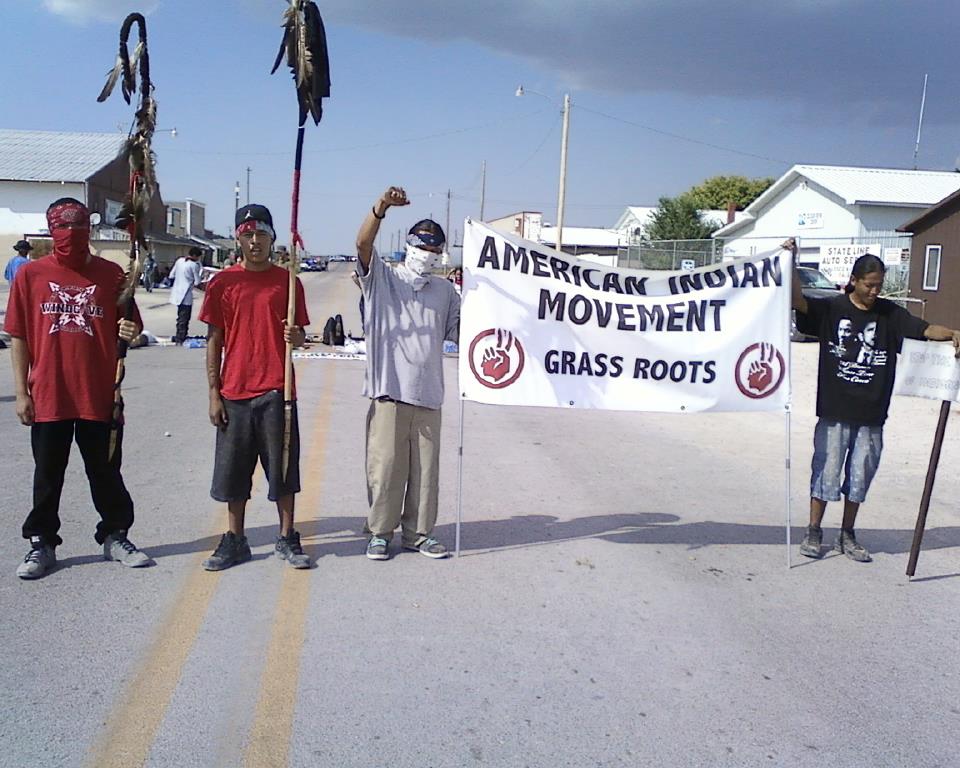
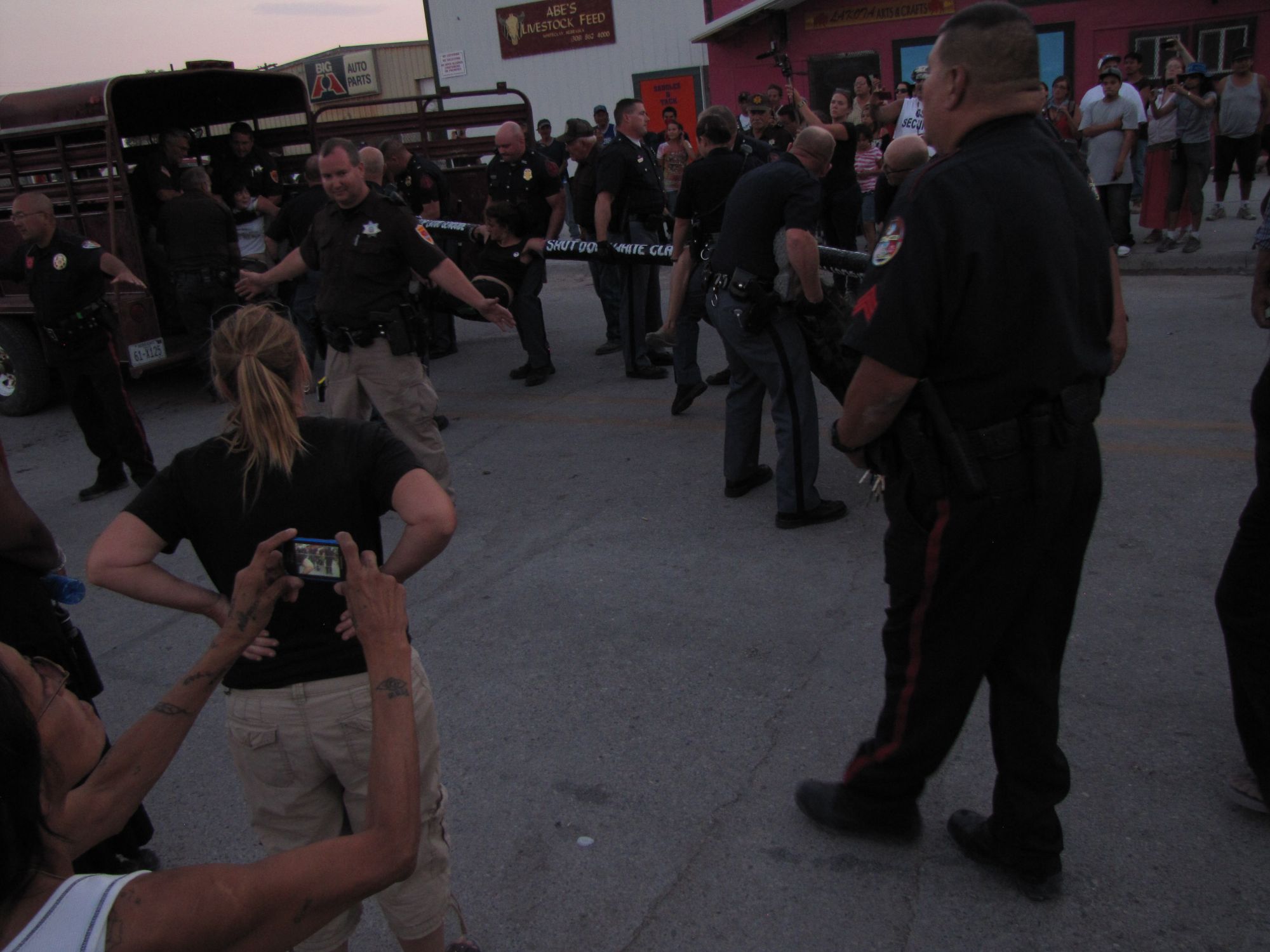
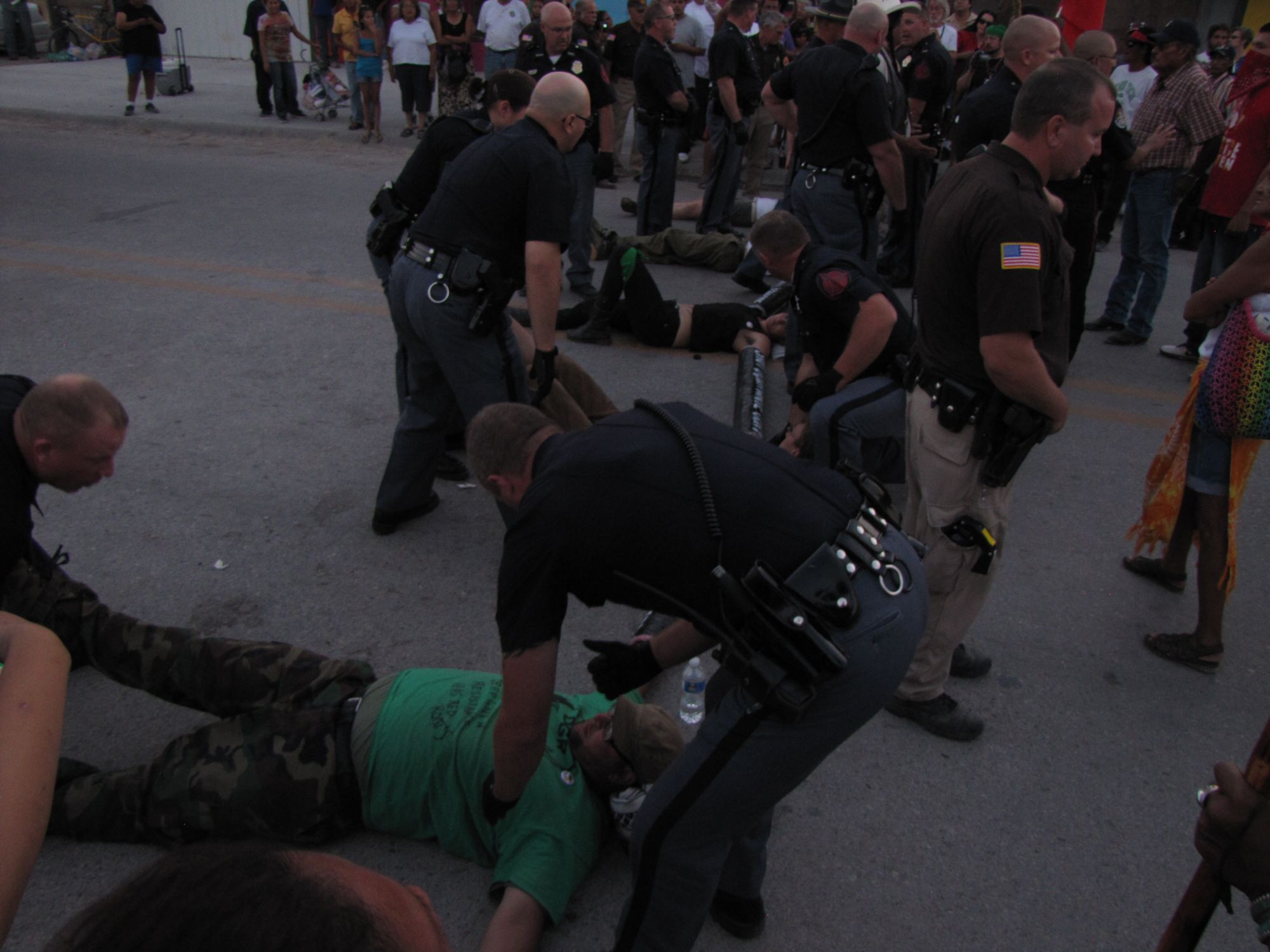



by Deep Green Resistance News Service | Jun 20, 2012 | Biodiversity & Habitat Destruction
By The Wilderness Society
Today the U.S. House of Representatives passed a package of anti-wilderness bills (H.R. 2578), including H.R. 1505, the “National Security and Federal Lands Protection Act.”
H.R. 1505 would hand over “operational control” of federal public lands within 100 miles of the Canadian and Mexican borders to the U.S. border patrol, and could open national parks, wildlife refuges, wilderness and other public lands to development, such as construction and road building. Rep. Raul Grijalva’s (D, AZ-7) amendment to strike H.R. 1505 from the package was unfortunately defeated. This package of bills now awaits movement in the Senate.
Prior to the House vote, a coalition of Hispanic and immigration reform advocates, Native American tribal organizations, sportsmen, businesses and conservation groups, sent a letter to members of Congress voicing their opposition and asking members to vote against the bill.
“H.R. 1505 is an overreach that would adversely affect everyone who enjoys America’s public lands,” said David Moulton, senior legislative director at The Wilderness Society. “The bill would allow road building, construction and development on lands that are loved for hunting, fishing, hiking and other recreational activities. This vote was not in the best interest of the people who enjoy the land for its natural beauty.”
H.R. 1505 is part of an anti-wilderness package that includes, among other destructive bills:
• The Sealaska bill would give away tens of thousands of acres of high-value public land from the Tongass National Forest to the Sealaska Corporation. This would allow the corporation to clear-cut valuable forest land and take ownership of the best recreation sites at the heads of bays or mouths of salmon streams. This land giveaway would effectively prevent a long-planned transition out of old growth logging on the national forest, and privatize prime recreation spots that are currently open to the American public for fishing, hunting, and recreation and are relied upon by many small tourism, outfitter and fisheries businesses.
• Title XI, the “Grazing Improvement Act,” is a virtual giveaway of over 247 million acres of Bureau of Land Management (BLM) and National Forest rangelands to the approximately 27,000 livestock producers who have grazing privileges on the lands managed by these two agencies. The bill would change the term of federal livestock grazing leases from the current ten years to 20 years. No other government entity in the U.S. issues 20-year livestock grazing permits. In addition, Title XI reduces the level of environmental scrutiny of livestock grazing practices on BLM and National Forest lands by allowing these agencies to exempt the issuance of grazing permits from National Environmental Policy Act review.
• The Quincy Library Group bill would take an unsuccessful and outmoded forest management pilot program and expand it across much of northern California, while simultaneously authorizing logging in roadless areas, spotted owl habitat, salmon habitat and other areas of critical environmental importance and mandating minimum annual timber cuts.
Opposed by the Department of Homeland Security (DHS), H.R. 1505 could endanger personal freedoms by closing without notice our lands to hunting, fishing, tourism and recreation, all multi-million dollar industries that support small businesses. DHS Secretary Napolitano testified before Congress in opposition to H.R. 1505, saying it “is unnecessary, and it’s bad policy.” DHS benefits from their close collaboration with law enforcement counterparts in the land management agencies. In addition to threatening lands, the bill threatens this collaboration.
H.R. 1505 is an extreme and radical measure that would put at risk 49 million acres of public lands in 17 states, sweeping away 16 bedrock environmental and land management laws in Joshua Tree National Park, Boundary Waters Canoe Area Wilderness, Acadia National Park and any other protected land that sits within 100 miles of the border.
The Wilderness Society recently updated the report, “Wilderness Under Siege,” to reflect the movement of these and other bills and what they would mean to America’s lands, waters and natural legacy. Also mentioned in the report is H.R. 4089 — a Trojan horse bill that includes a sneak attack on wilderness. H.R. 4089 recently passed the House, and awaits passage in the Senate.
From The Wilderness Society: http://wilderness.org/content/land-grab-masked-national-security-measure-passes-us-house-representatives
Photo by CDC on Unsplash





















